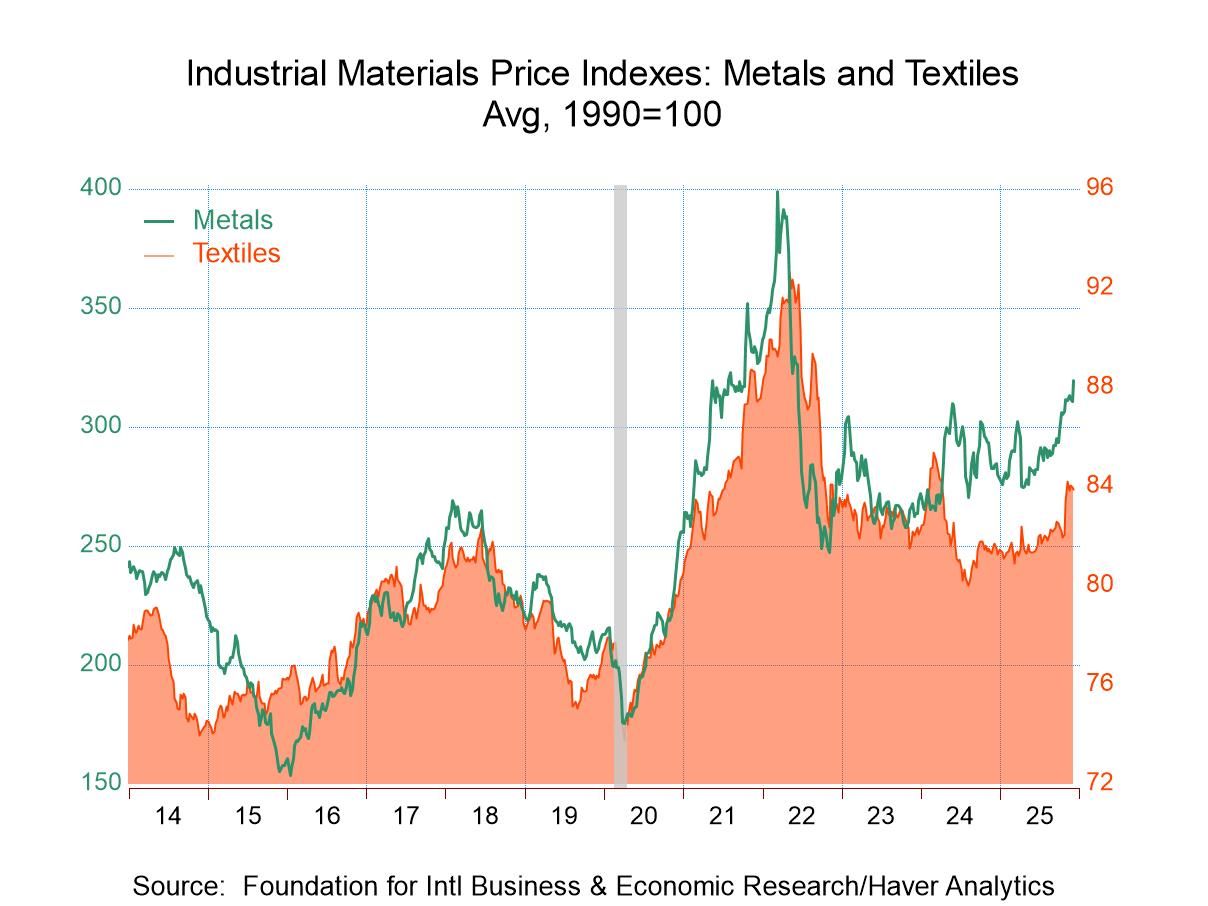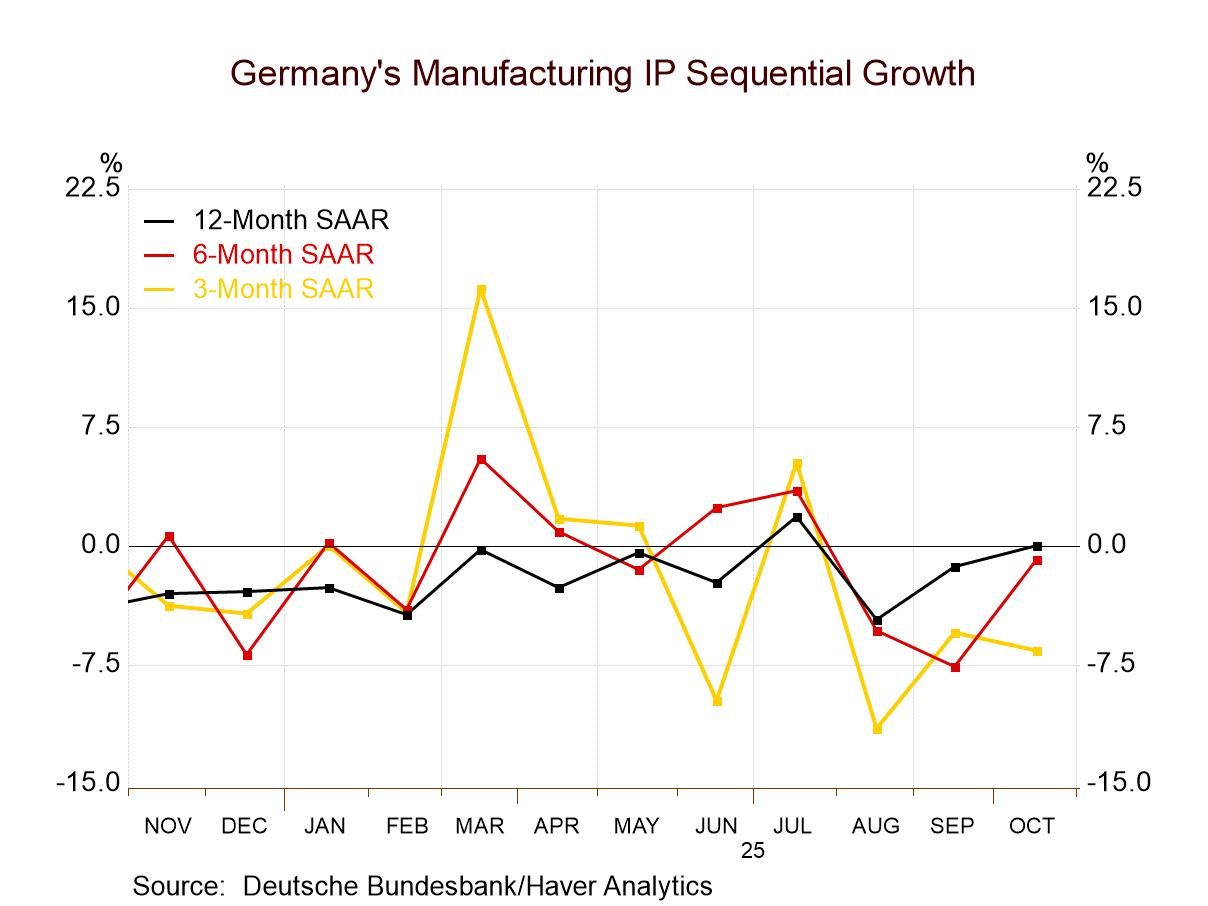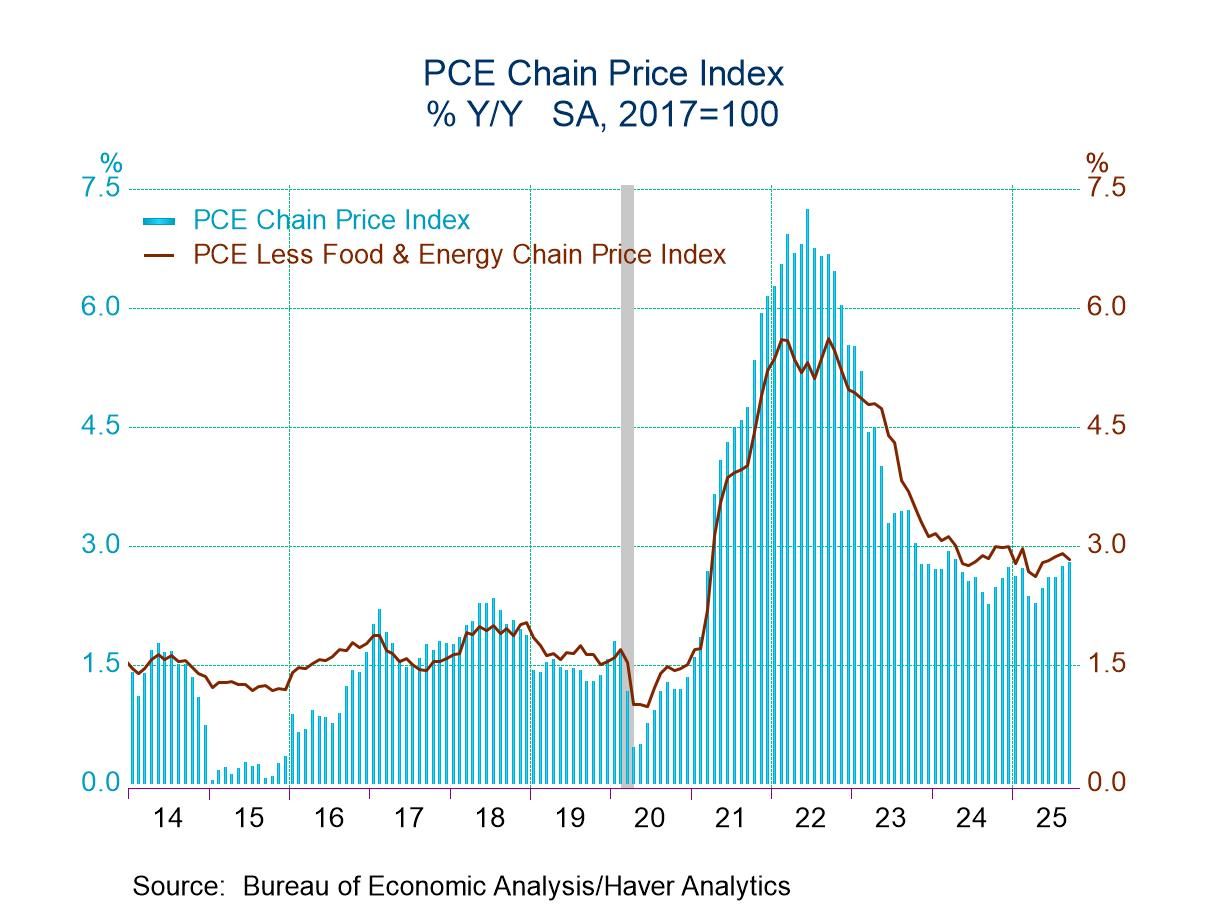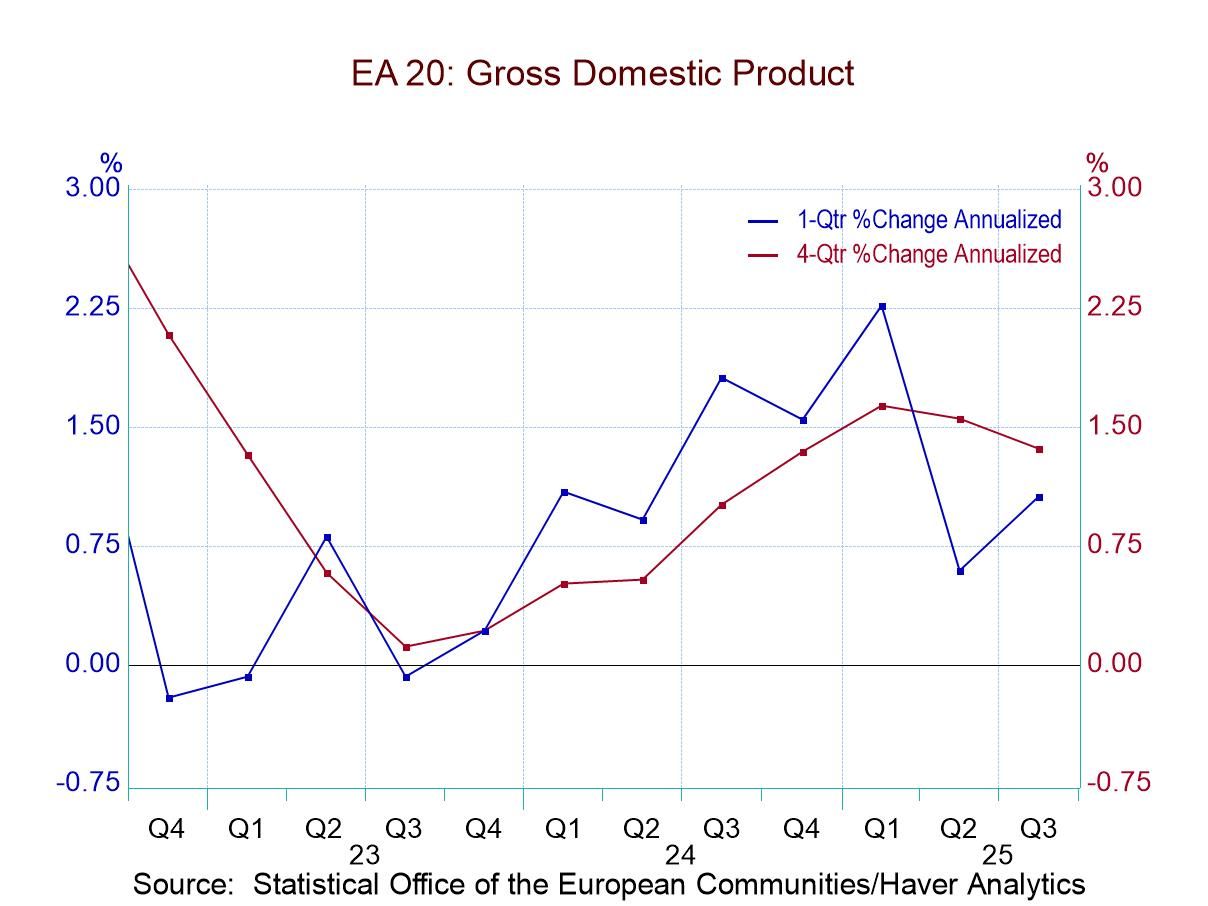 Global| Apr 28 2005
Global| Apr 28 2005Germany's Chain GDP Yield Slightly Higher Long-Term Growth through 2004
Summary
Germany's Federal Statistical Office today introduced its new chain-weighted GDP data with benchmark revisions through Q4 2004. No new periods were published; that will occur for Q1 2005 on May 24. The chain-linking is calculated on [...]

Germany's Federal Statistical Office today introduced its new chain-weighted GDP data with benchmark revisions through Q4 2004. No new periods were published; that will occur for Q1 2005 on May 24.
The chain-linking is calculated on an annual basis, with each line item adjusted by the prices prevailing during the previous year. This is similar to the UK process, but different from the US, which uses the immediate prior quarter. Like the US, though, Germany moved to a reference year in 2000, meaning that price and quantity indexes equal 100 in that year. The fixed-weight base period, most recently 1995, is now obsolete. 2000 is not a "base" year, but the reference year for the index calculations.
With this revision, the German statistics office also introduced other methodological changes. Greater use is made of hedonic pricing, that is, price indices that account for quality changes in goods and services. Newly available service sector statistics are incorporated as well as data from the quadrennial compilation of cost structure information. Finally, "FISIM" data, financial intermediation services indirectly measured, are reorganized according to conventions of the EU statistics regulations.
Interestingly, these various technical changes had only a mild impact on total GDP, which now shows about 0.2% more growth annually than before. In the most recent years, the difference is smaller still, as seen in the table below. Growth in 2004 was virtually the same at 1.6%, according to both methods.
Certainly, some GDP components do show a larger difference. Equipment investment is one of these, as might be expected, with a growth differential averaging about 1.2 percentage points over the last 10 years. Thus, for example, equipment outlays were up 0.9% last year by the new data, but down by 0.2% according to the old calculation scheme. Over the last five or six years, private consumption growth has been nearly the same, but prior to 1998, the chain calculation far outperformed the old fixed-weight regime, so the amount of consumption is larger now than shown before.
As we have noted with other countries as they change this GDP compilation system, the new data don't alter our subjective sense of the economy's health, but they give us a much more solid assessment of it, particularly as spending and production priorities shift around. Sometimes relative pricing is the reason this happens, but other times, technology, demographics and politics are more significant and these forces can push both prices and quantities. So a flexible accounting system gives a better vision of the "big picture" of real growth and inflation, regardless of what year is chosen to be "100".
| Germany | Q4 2004 | Q3 2004 | Q2 2004 | Q1 2004 | 2004 | 2003 | 2002 |
|---|---|---|---|---|---|---|---|
| GDP - New (Bil.Ch.2000 Euros) | 528.27 | 529.00 | 529.20 | 528.12 | 2123.14 | 2090.35 | 2090.30 |
| % Change | -0.1 | -0.0 | 0.2 | 0.4 | 1.6 | 0.0 | 0.2 |
| GDP - Old (Bil.1995 Euros) | 501.60 | 502.77 | 502.66 | 500.89 | 2007.92 | 1987.53 | 1990.27 |
| % Change | -0.2 | 0.0 | 0.4 | 0.5 | 1.6 | -0.1 | 0.1 |
| Equipment Investment - New % Change |
-0.6 | 3.4 | 2.8 | -3.7 | 0.9 | -0.3 | -7.4 |
| Equipment Investment - Old % Change |
-0.4 | 3.4 | 1.9 | -3.9 | -0.2 | -1.5 | -8.5 |
Carol Stone, CBE
AuthorMore in Author Profile »Carol Stone, CBE came to Haver Analytics in 2003 following more than 35 years as a financial market economist at major Wall Street financial institutions, most especially Merrill Lynch and Nomura Securities. She had broad experience in analysis and forecasting of flow-of-funds accounts, the federal budget and Federal Reserve operations. At Nomura Securities, among other duties, she developed various indicator forecasting tools and edited a daily global publication produced in London and New York for readers in Tokyo. At Haver Analytics, Carol was a member of the Research Department, aiding database managers with research and documentation efforts, as well as posting commentary on select economic reports. In addition, she conducted Ways-of-the-World, a blog on economic issues for an Episcopal-Church-affiliated website, The Geranium Farm. During her career, Carol served as an officer of the Money Marketeers and the Downtown Economists Club. She had a PhD from NYU's Stern School of Business. She lived in Brooklyn, New York, and had a weekend home on Long Island.





